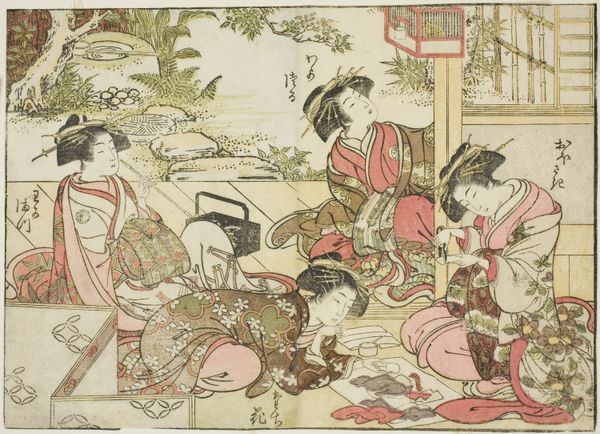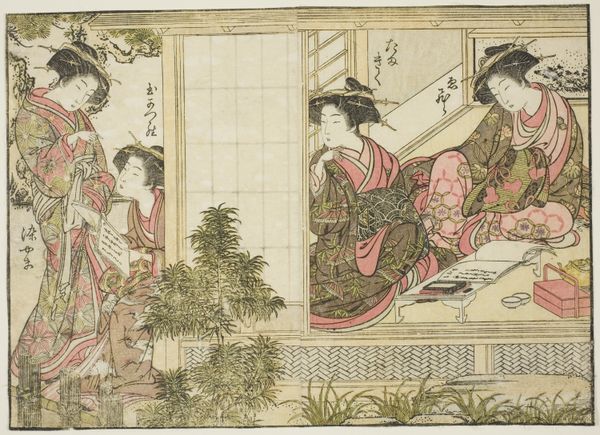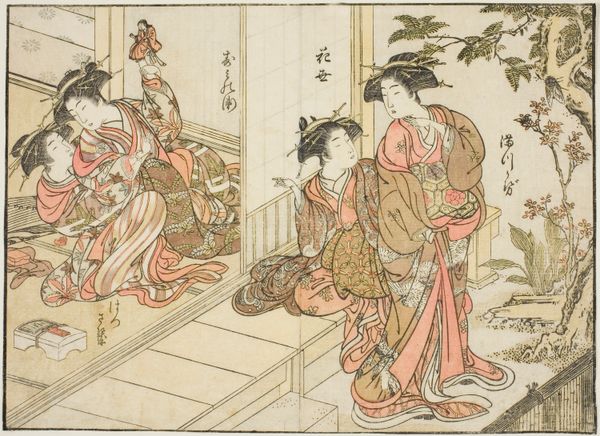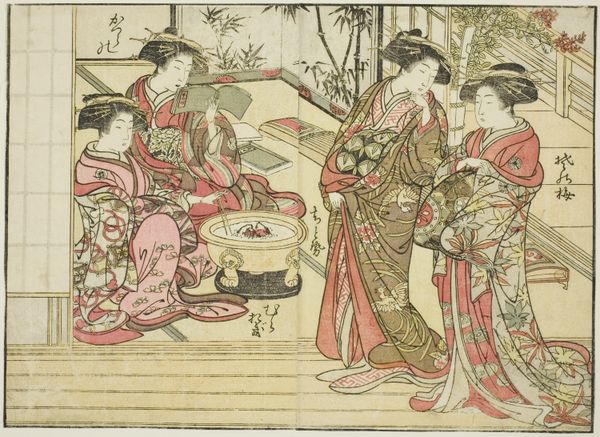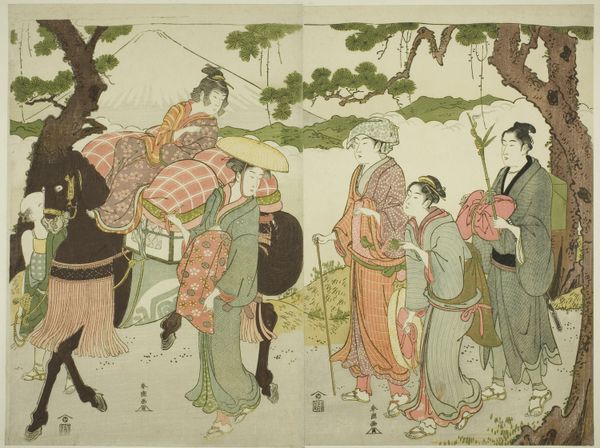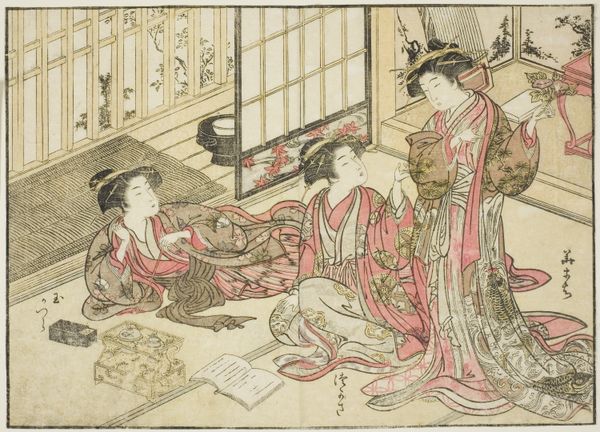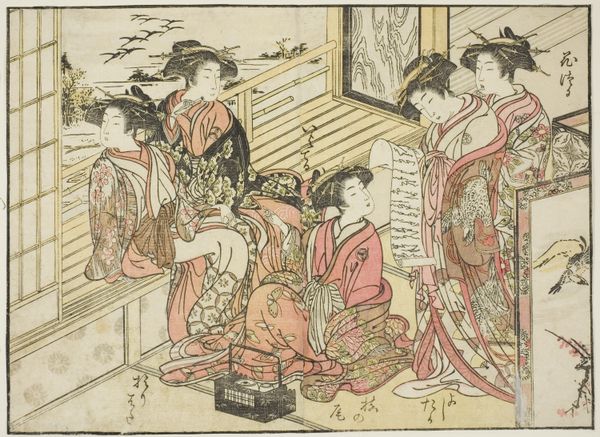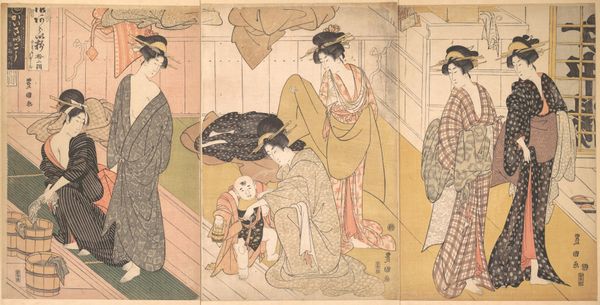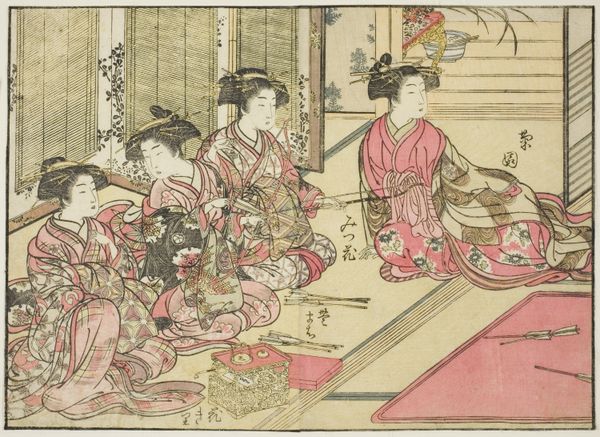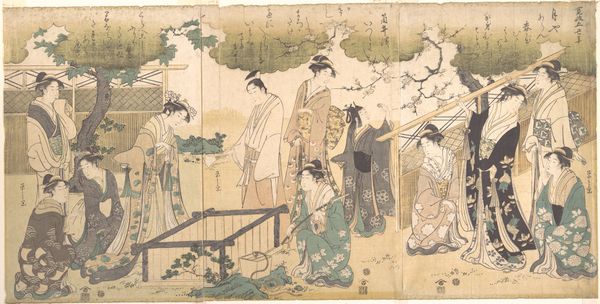
Courtesans of Ogiya, from the book "Mirror of Beautiful Women of the Pleasure Quarters (Seiro bijin awase sugata kagami)," vol. 1 1776
0:00
0:00
print, woodblock-print
#
portrait
# print
#
asian-art
#
ukiyo-e
#
woodblock-print
#
genre-painting
Dimensions: 21.4 × 29.7 cm ( 8 7/16 × 11 11/16 in.)
Copyright: Public Domain
Curator: Here we have "Courtesans of Ogiya" a woodblock print from the book "Mirror of Beautiful Women of the Pleasure Quarters," created around 1776 by Kitao Shigemasa. Editor: It strikes me immediately with its lightness – a muted, almost pastel palette that belies what I imagine was quite a rigid social context. Curator: Indeed. Shigemasa captures these women with such elegance. Note how their elaborate kimonos, each patterned differently, seem to tell a story of refined taste and subtle social ranking. These fabrics were luxurious. Editor: Exactly! And think about the production – the layers of carving required to create these delicate lines and tonal variations. It speaks volumes about the time and labor invested, doesn't it? Almost obscures that these figures are "products", made available to the marketplace in a way. Curator: The rooster are symbolic, though, their presence adds a complex layer. Editor: Ah, yes! They disrupt the elegance and serve as reminders of masculine societal order. The artist is playing with symbols of femininity versus masculine presence. Curator: Precisely. And consider the pleasure quarter not just as a site of commerce, but also of performance, style and artistic expression. These women, displayed as objects, also influenced culture through fashion, poetry and artistic patronage. The visual lexicon associated with "beauty" was curated. Editor: A curator made visible through commerce and printing technology! It is a complicated tension: agency versus objectification through wood and ink and paper! Curator: I agree! It shows both agency and commodification of those expressions of pleasure, class, gender and beauty Editor: Seeing the craft involved makes me wonder what kind of socio-political messaging went in and out of it all? Curator: It is this constant tension, between what is crafted and commodified in these "images," which makes me ponder the idea of feminine presentation of symbols in public view. Editor: An interplay to carry with us after we leave the gallery. Curator: Exactly. It adds such an additional layer to seeing symbols beyond beauty in material and popular consumption.
Comments
No comments
Be the first to comment and join the conversation on the ultimate creative platform.
